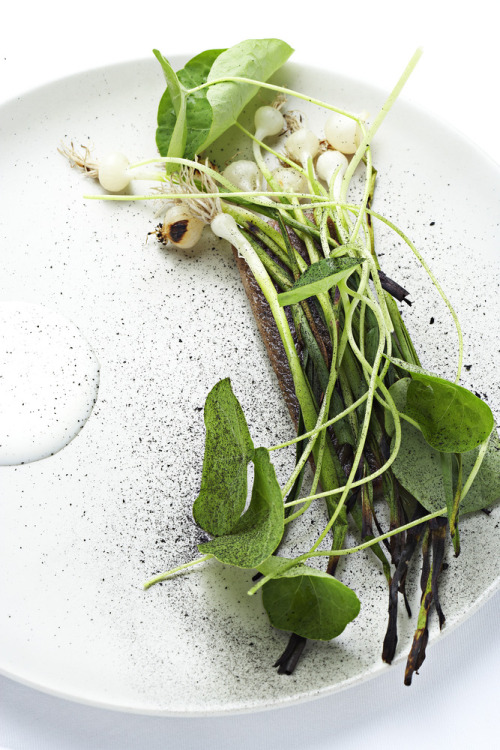simple food conceals its complexity. take, for instance, the foraged wild plants that now show up everywhere, especially in the nordic countries. thorsten schmidt, host of the symposium and chef behind malling and schmidt, showed us a few of the fields and forests from which he gathers wild vegetables and herbs for his restaurant in aarhus. learning about the culinary uses of these plants has been a multi-year exercise in trial and error, schmidt said. "i wanted to use more of the plants that grow in jylland than the farmers grew at the time but we had no local foragers to gather them for us. i had to learn how to identify and use these plants myself ... it was slow to start with,” he says, “but i now use more than 180 plants from around here to accent my cooking.”
he discovered early on that botanical field guides are useful for survival but not gastronomy. they often indicate if a plant is edible but almost never explain how plants might be used by cooks interested in their flavour or texture. they also rarely describe how plants look like as they grow through the year. over the last few years, schmidt has developed a network of experts who help him discover the wild foods around aarhus. one of these is a botanist with a particular interest in edible plants. "i send him a photograph of the plant,” schmidt says, “and he tells me how much i would have to eat for it to be poisonous. then i start experimenting with it, picking, tasting, and cooking with different parts of the plant every few weeks."
a slow, trial-based, experimental approach like this is critical because knowing what to eat is mostly about knowing when and how to eat a particular food. this is especially true when the seasons are as dramatic and change as quickly as they do this close to the arctic circle.
bo bech, from geist in copenhagen, was also at the symposium. the dish he made for dinner on the second night featured grilled baby leeks. "we forget that things change through their lives," he explained. "no one in denmark, maybe no one anywhere, harvests baby leeks this small. these are just a few days old and they will surprise you." he handed me a baby leek to illustrate. it was an unpromising vegetable, looking like a cross between a weedy tuft of grass and and a very slender scallion. but grilled for just a few minutes on one side over a very hot fire, the leeks became soft, sweet, and juicy on the charred side, pungent with the green flavours of garlic and white onions on the raw side.
grilling a baby leek on only one side is about cooking in the moment: a leek is young enough to be cooked like this for only a few days in its growing cycle. after that it is a regular leek, too big and fibrous to eat without long, slow, moist heat. cooking in the moment means learning not only that a leek is good to eat for this vanishingly small window of its life, but also that it is delicious cooked in a way totally different from how leeks are usually cooked.

warmed smoked eel, crème fraîche, char-grilled baby leeks, raw nasturtium leaves, carbonized garlic, by bo bech. (photo by claes bech-poulsen.)
"something we have had to do is learn how to use the products as they change through the seasons, to appreciate something for what it is right now instead of wishing it was something else, to be willing to reorganize the menu completely when a particular ingredient suddenly goes out of season because of the weather," schmidt says. "it takes a bit of rethinking on the part of the chef and diner. we have to learn to eat things as they are and figure out how to make them the best for what they are instead of wanting something that is out of season."
committing to cooking in the moment, especially when the moments are as fleeting as they can be in the nordic region, requires that the chef gives up the predictability that buying produce from all over the world offers.
schmidt says that "it takes a while to learn to subdue your ego and get used to not just letting yourself take the easy way out and ordering whatever your purveyors have, whether or not they're in season. you learn to cook whatever is available. when you're lucky enough to have beautiful ingredients, your responsibility is to do the work to find out what they are, when to use them, and how to cook them as simply as possible." in exchange, the chef grows comfortable with responding in the moment and eventually develops the knowledge and confidence to seek out the best products and then serve things at the peak of their ripeness almost completely unadorned, as schmidt did: perfect, perfumed strawberries accompanied by nothing more (and nothing less) than a shower of herbs and pale gold cream smelling of fresh-cut grass.

No comments:
Post a Comment